6 Popular Chinese Dishes in the USA that You Cannot Find in China
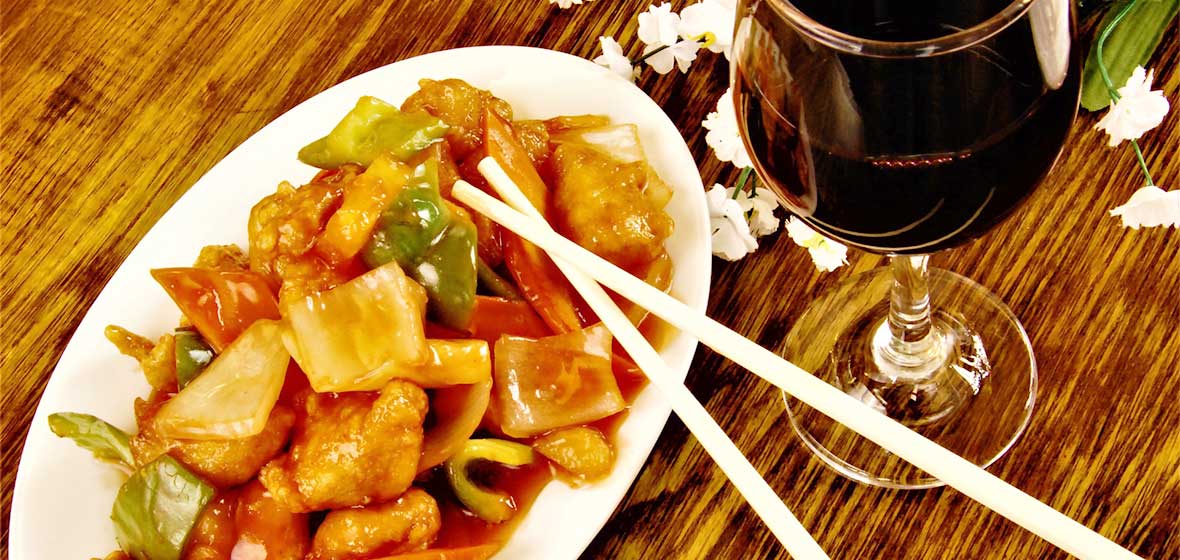
Of all the world’s cuisines, none intrigues and delights us more than that of Chinese. From the freshest vegetables stir-fried to perfection in a wok to the most flavorful seafood steamed in a pan, this tantalizing cuisine reflects the philosophy of balance and contrast that is very much integral to the Chinese way of life.
The USA is home to more than 45,000 Chinese restaurants, this number is greater than all the McDonalds, KFCs, Pizza Huts, Taco Bells and Wendy’s in America combined. The earliest Chinese restaurants can be traced back in the San Francisco Bay Area and elsewhere in the West in the mid-19th century, established by laborers, mostly from Canton (nowadays Guangdong Province in southern China), who worked on the transcontinental railroad and the California Gold Rush, forming communities that would later come to be known as ‘Chinatowns’. Many of these early immigrant families began to open small businesses and restaurants became a popular choice. They adapted their ingredients and recipes to suit the palates of their non-Chinese customers, and thus American Chinese food was born.. Most of the Chinese food available at that time was largely derived from Cantonese cuisine, which is one of eight of the broader regional cuisnes. It wasn’t until the 1960s and 1970s that the US got its first taste of ‘authentic’ Chinese cuisine. Today, Chinese restaurants have become a part of American culture.
If you are familiar with Chinese cuisine, you would find that the popular General Tso’s chicken, chop suey, and fortune cookies are nonexistent in China. Our article will explore the origins of 6 popular Chinese dishes in the USA.
1. General Tso’s Chicken
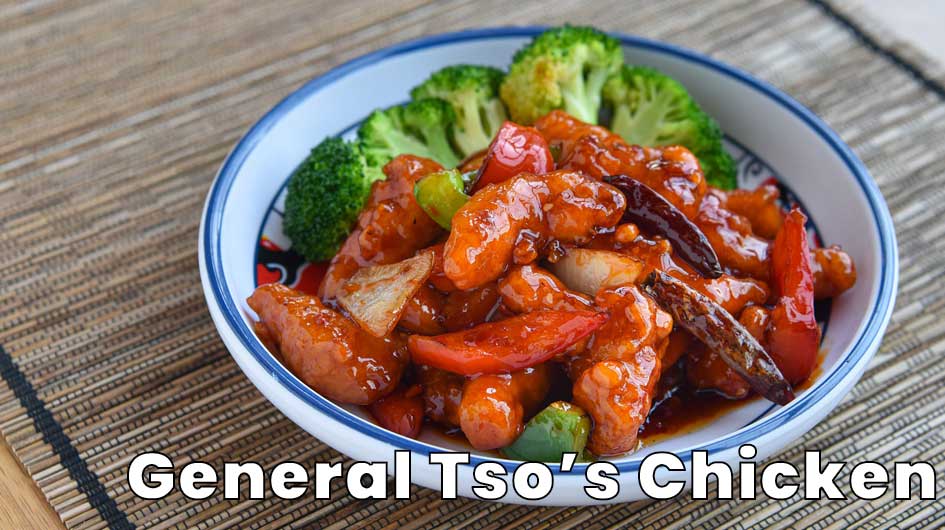
Their Authentic Counterparts: Sweet and Sour Fish(松子鱼), Sweet and Sour Pork with Pineapple(咕咾肉) and Cantonese Sweet and Sour Chicken(酸甜鸡)
General Tso’s Chicken is named after Tso Tsung-t’ang (左宗棠 Chinese Pinyin: Zuo Zongtang), a formidable nineteenth-century general who is said to have enjoyed eating it. He was born in 1812 in Hunan Province and died in 1885 after a glittering career in the Qing dynasty civil and military administration. He led successful military campaigns against various rebel groups like Taiping Rebellion but is best known for recapturing Xinjiang in western China. Hunan cuisine (also known as ‘Xiang’ cuisine) is rich and flavorsome. It is one of the eight great traditions of Chinese cuisine and is known for its spicy, hot flavors, and is thus commonly compared to Sichuan cuisine.
Hunan-born Chef Peng Chang-kuei is said to have created General Tso’s chicken in Taiwan in 1952 for a banquet welcoming a naval delegation from the USA. He named the dish General Tso’s Chicken in honor of the famous Hunanese general when asked the name of the dish. In 1973, Peng went to New York, where he opened his first restaurant near the United Nations HQ. At that time, Hunanese food was unknown in the United States, and it wasn’t until his cooking attracted the attention of officials at the United Nations HQ, and especially of the American Secretary of State, Henry Kissinger, that his reputation grew.
2. Chop Suey
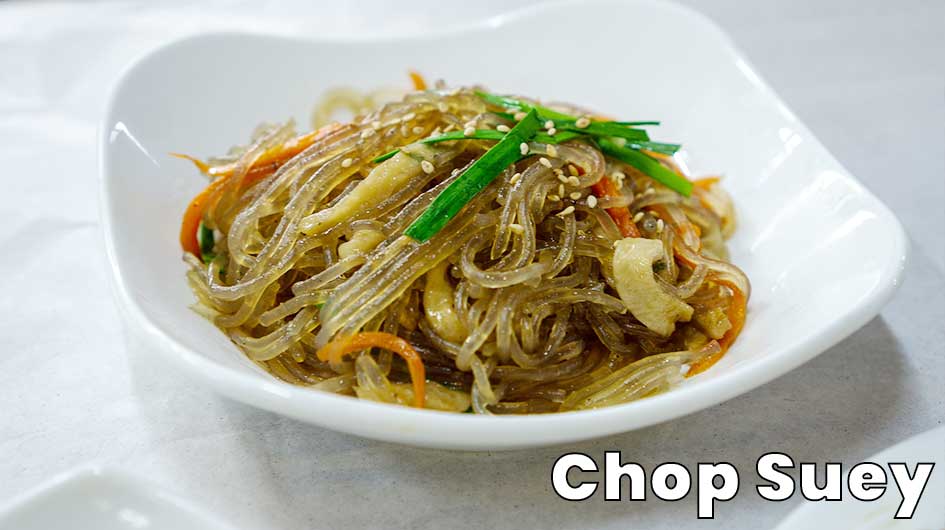
The Authentic Counterparts: Chow Mein(炒面) , Sap Seui(炒杂碎)
The full name for chop suey is believed to be Li Hongzhang chop suey – named after the man many believe was responsible for its creation. A tale holds that the dish was invented by a chef of Li Hongzhang (李鸿章formerly rendered in English as Li Hung Chang). Li Hongzhang, a high-ranking official of the late Qing, played a seminal role in promoting the modernization of China in the late nineteenth century. During his visit to the USA in 1896, He was hosting a group of American guests, but unfortunately, run out of ingredients, so the chef threw together all the left over ingredients for the last dish. When they asked what had been served, Li’s response was ‘chop suey’ – many things put together. Chop Suey means “Odds & Ends,” more colloquially known as “leftovers.” Chop suey soon became a staple on the menus of Chinese restaurants from New York to San Francisco.
Another tale is that this dish was created by a Chinese chef at a California mining camp. It was created as a cheap way of feeding miners or railroad workers in the 19th century. The dish was based on a regional Cantonese dish called sap seui, or shap suì (“mixed bits”), usually made with organs from livestock that was minced.
The authentic counterpart is Chow Mein (Stir-fried Noodles), made with cooked noodles, and fried with vegetables, shrimp, chicken, beef or pork.
3. Fortune Cookies
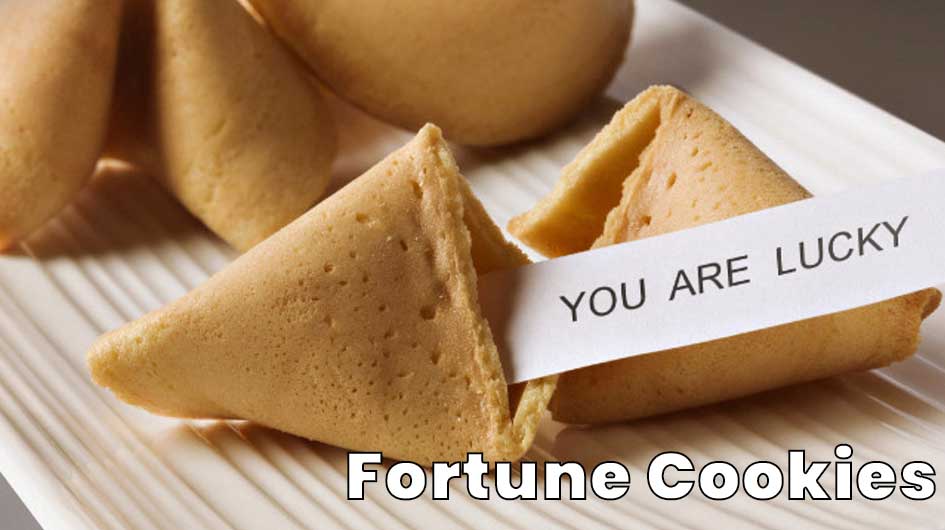
Their Authentic Counterpart: no
Although this little confection has come to symbolize Chinese food in restaurants across America, fortune cookies have not been adopted in any form in China. It is commonly believed that Fortune Cookies was inspired by a Japanese snack called omikuji senbei, a rice cookie with a small fortune inside. The rice cookies were first made in Kyoto in the 19th century. They may have been introduced to America around the turn of the 19th century at San Francisco’s Japanese Tea Garden. When Japanese-Americans lost their businesses during World War II, Chinese bakers took over making the confections, tweaking the recipe. You will find these cookies have become a common symbol in many Chinese restaurants. What’s a meal of Chinese without popping one of these open and sharing your fortune at the table.
4. Sesame Chicken
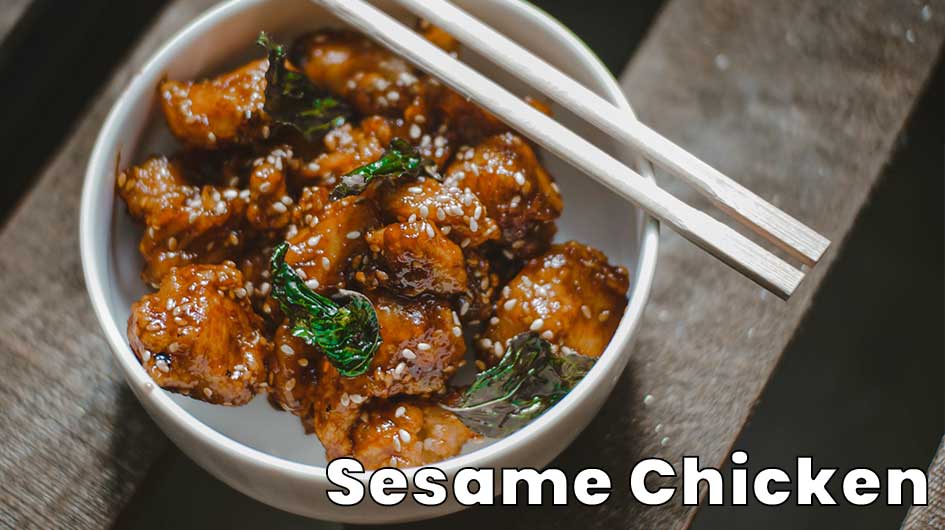 Photo by Janine Beth Salazar from Pexels
Photo by Janine Beth Salazar from Pexels
Their Authentic Counterparts: Sichuan Spicy Chicken
Deep-fried chicken coated with sweetened soy sauce, chili, and garlic then topped with tasty toasted white sesame seeds, Sesame Chicken is a very popular dish in Chinese restaurants. It is believed to have originated in the 1980s in a Sichuanese restaurant in Hong Kong. This dish was based on Laziji(辣子鸡), or Sichuan Spicy Chicken, which is a stir-fried dish, consisting of marinated pieces of chicken, in dried Sichuan chili peppers, spicy bean paste, Sichuan peppers, garlic, and ginger, and then deep-fried. But you should be aware of the differences: The authentic dish is usually made with chicken on the bone, diced into small pieces, with much more chilies in this dish than chicken, so don’t order it if you don’t like spicy food. The Sichuan peppers used in the dish will give your mouth a numbing sensation.
5. Egg Foo Young
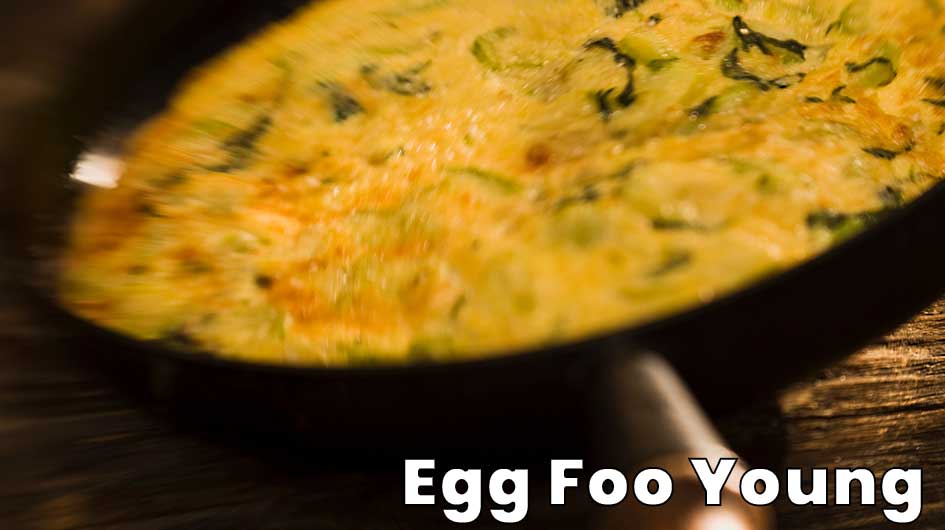
Their Authentic Counterparts: Sweet And Sour Eggs (蓑衣蛋), Danbing (蛋饼), Shou Zhua Bing (手抓饼), Stir-fried Chinese Chives & Eggs (韭菜煎蛋)
Egg foo young is often described as a Chinese omelet. However, it is believed to have come from fu yung egg slices, an elaborate dish found in traditional Cantonese cuisine, literally meaning lotus egg. This Chinese dish consists of lightly beaten eggs with either diced ham, chicken, roast port, beef, shrimps, and an assortment of vegetables. Stir-fried tomatoes with egg is a popular home comfort food that can be found in restaurants across China. During spring, when chives are in season is another favorite.
The Chinese enjoy many egg dishes that can be found in every restaurant or street stall in China from steamed, boiled, braised, stir-fried, in soups, salted, and preserved.
6. Moo Shu Pork
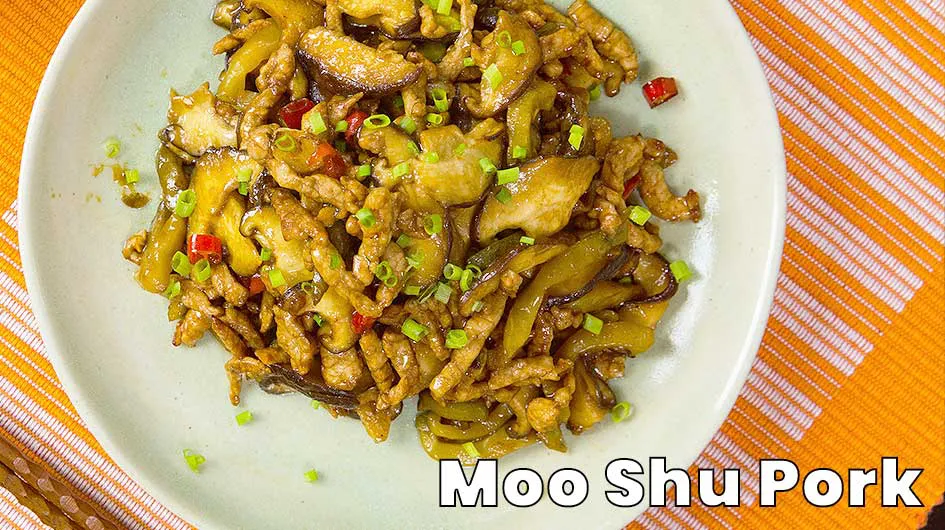
Their Authentic Counterparts: Muxu Rou (木须肉or木樨肉) Fried Pork with Black Fungus (木耳炒肉)
Shredded meat (usually pork) with vegetables and seasonings, rolled in thin pancakes, Moo Shu Pork is a light, healthy, and very delicious dish. In a rare exception, Moo Shu Pork (Muxu Rou) does exist in China. However, it does not look nor taste like the dish found in the west, as the Chinese version does not have the pancake. This dish originated in Shandong Province in eastern China is traditionally made with sliced pork, wood-ear fungus, and eggs, whose color represents the blossoms of the Osmanthus tree, which the dish is named. In the USA, the dish was reinvented by giving it the Peking duck treatment -- wrapping it in a crepe-like pancake and serving it with hoisin sauce and slivers of green onion. In Beijing, Muxu Rou is a must dish for Longtaitou Festival, also called the Dragon-Head-Raising Festival, or Double-Second Festival, which is a Chinese folk traditional festival held on the second day of the second lunar month (normally in mid-March) annually.
Food Tours
If you want to experience authentic Chinese food and culinary diversity in China, then you must join us on a culinary adventure to tingle your senses. We have several foodie tours for you that we are sure will delight your palette. We can also tailor-make a food trip for you.
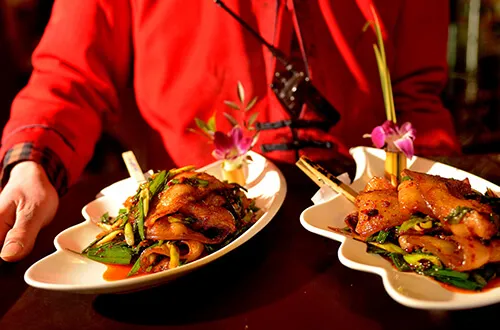 Top 10 Most Popular Dishes in China
Top 10 Most Popular Dishes in China 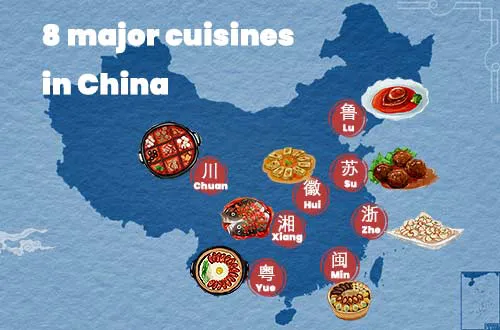 Regional Cuisines in China
Regional Cuisines in China 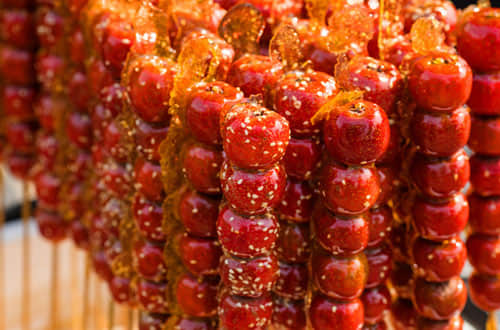 Top 10 Most Popular Desserts in China
Top 10 Most Popular Desserts in China 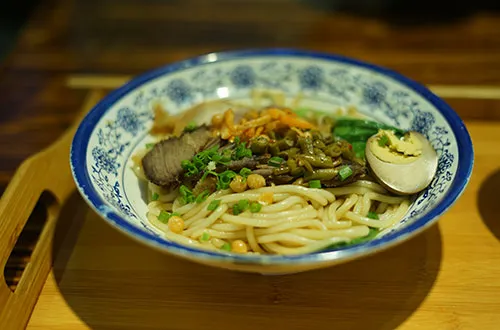 Top 10 Rice Noodles in China
Top 10 Rice Noodles in China